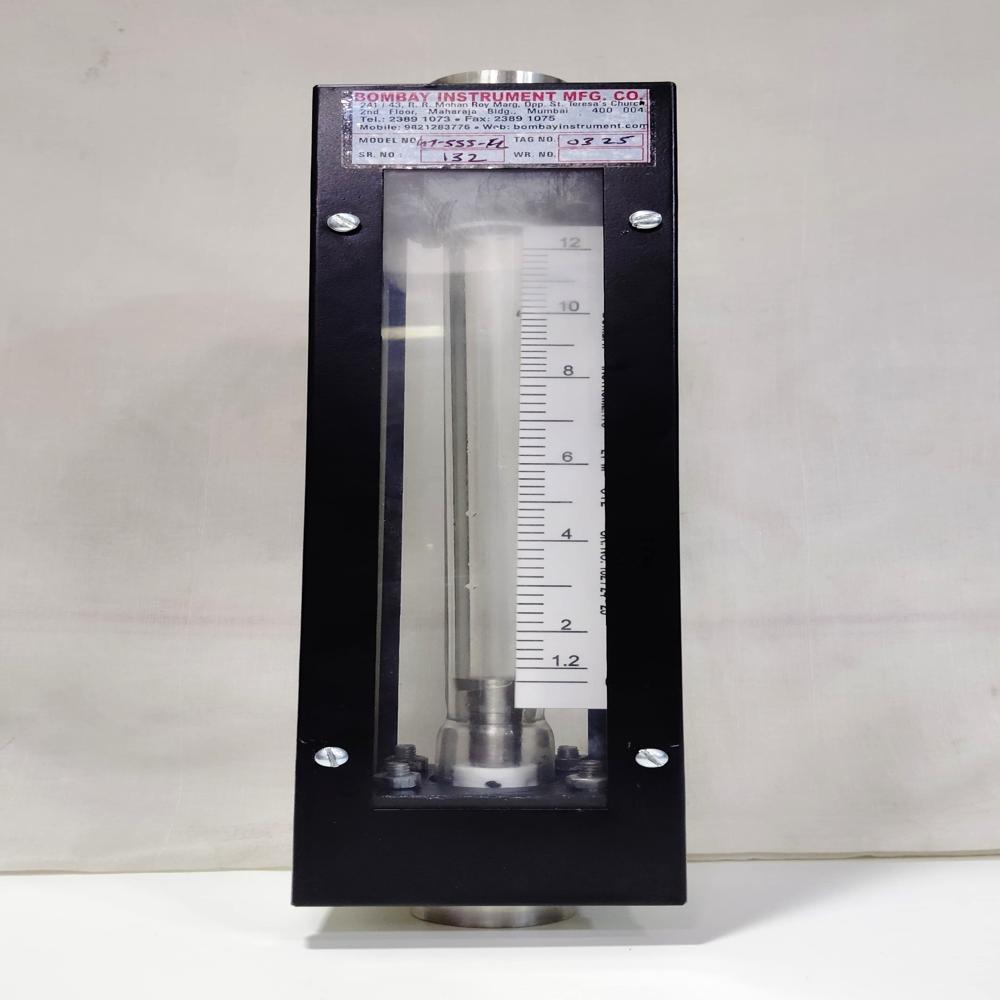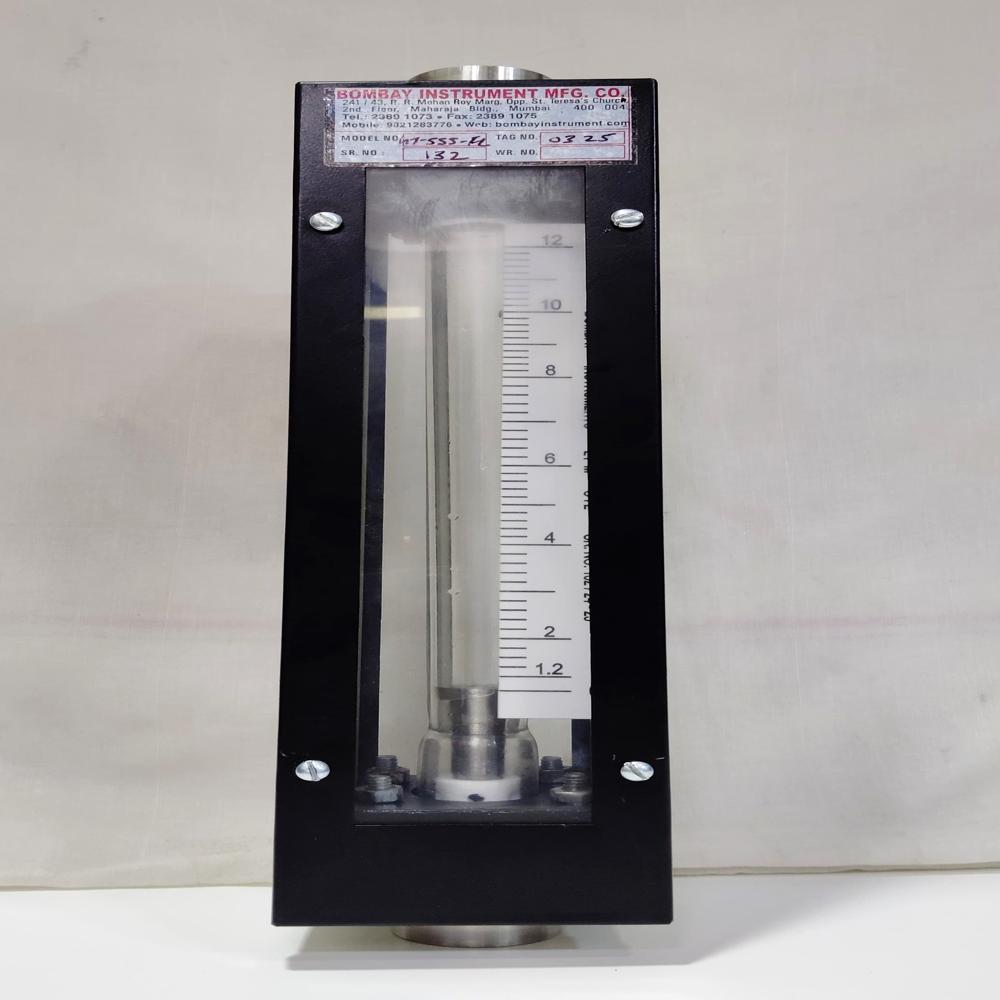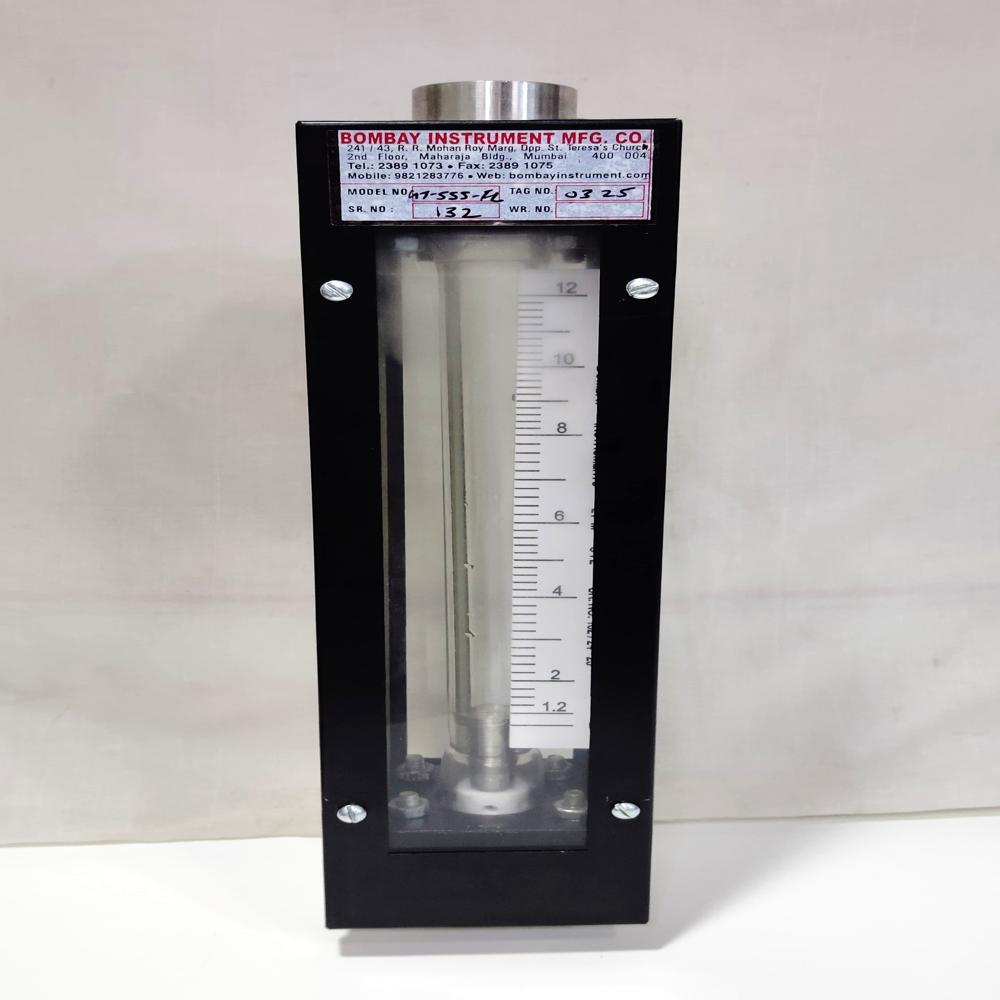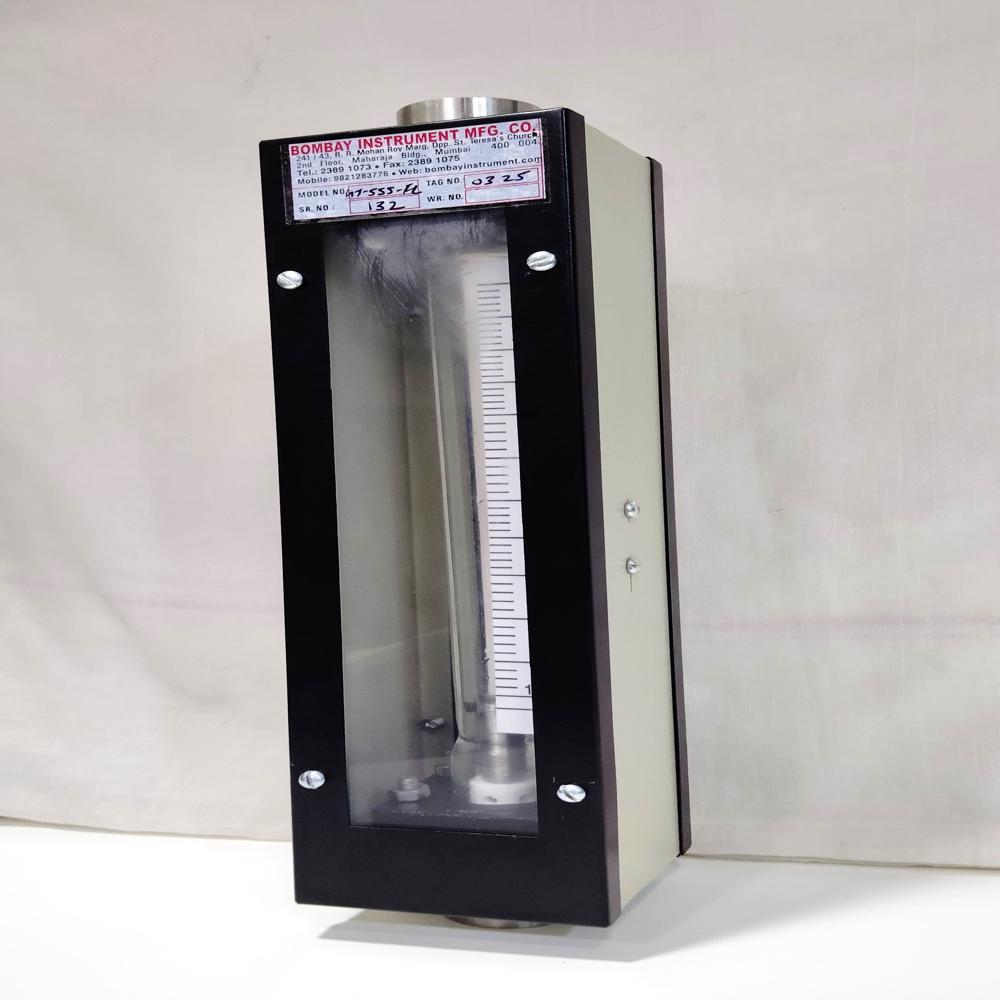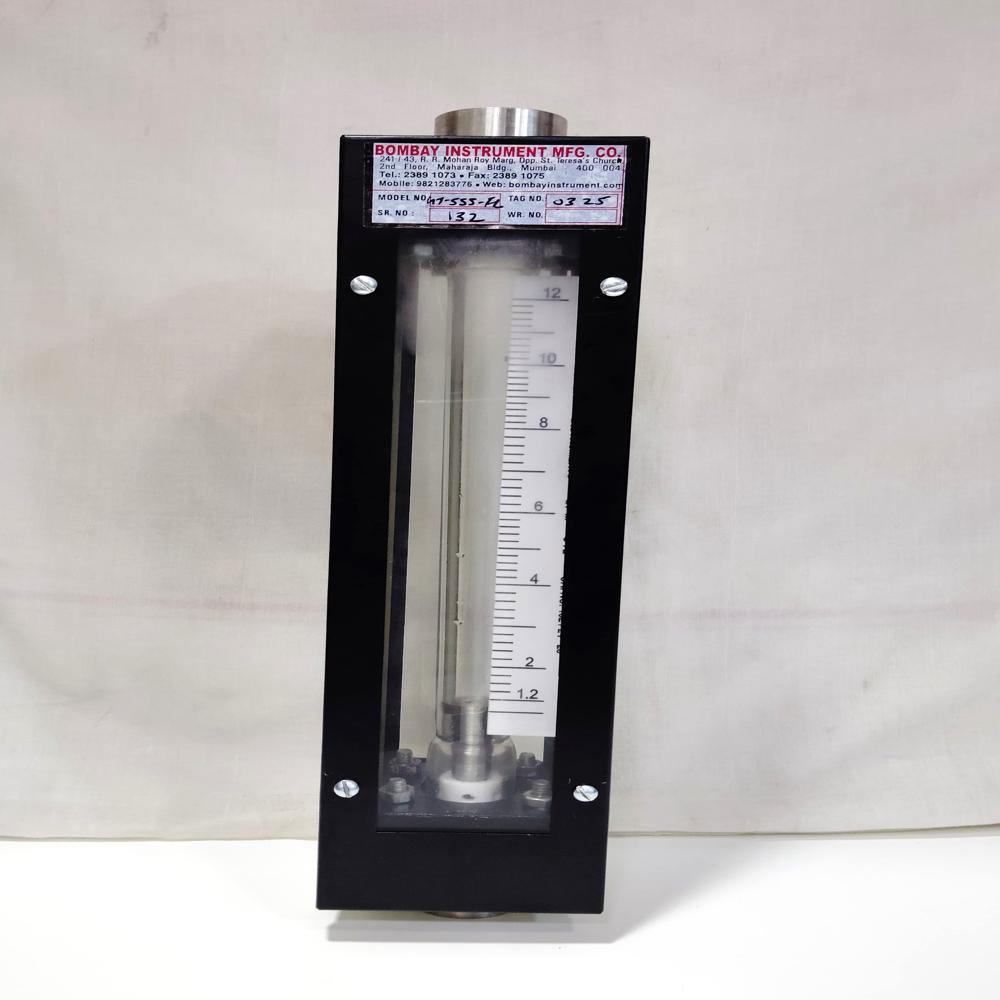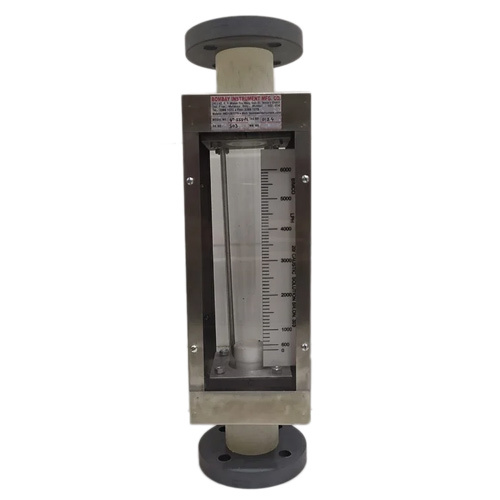GLASS TUBE ROTAMETER
Product Details:
- Voltage 12 Milliampere (mA)
- Power Supply 24 V DC
- Display Type NA
- Power 24 Volt (v)
- Specimen Size 15 Centimeter (cm)
- Usage MEASURING FLOW
- Capacity 12 Kg
- Click to View more
GLASS TUBE ROTAMETER Price And Quantity
- 1 Number
- 25700.0 INR/Number
GLASS TUBE ROTAMETER Product Specifications
- WATER
- SS304
- 1 Liter (Ltr)
- 1 Kilograms (kg)
- 80 Celsius (oC)
- 30 Celsius (oC)
- 5 SEC
- MANUAL
- MEASURING FLOW
- WHITE
- 12 Kg
- 2 %
- 15 Centimeter (cm)
- 24 Volt (v)
- 30
- 10 Centimeter (cm)
- NA
- 12 Milliampere (mA)
- 24 V DC
GLASS TUBE ROTAMETER Trade Information
- MUMBAI
- Cash in Advance (CID)
- 1000
- 4 Week
- Sample costs shipping and taxes has to be paid by the buyer
- BOX PACKING
- Asia Middle East Africa
- Maharashtra All India
- ISO 9001 : 2015
Product Description
A glass tube rotameter is a flow measurement device commonly used to measure the flow rate of liquids and gases in a variety of applications. It consists of a tapered glass tube with a float inside. As fluid passes through the tube, the float rises or falls depending on the flow rate, and the position of the float indicates the flow rate.
Heres a breakdown of how it works and its key features:
1. Design and Components:
-
Glass Tube: The tube is typically made of glass for visibility and durability. It has a tapered design, wider at the bottom and narrower at the top.
-
Float: A free-floating object inside the tube, which rises as the flow rate increases. The float typically has a shape (like a ball or disc) that allows it to move freely and follow the flow of the fluid.
-
Scale: The tube usually has a graduated scale marked along its length. The scale indicates the flow rate based on the position of the float.
2. How It Works:
-
When fluid flows into the bottom of the glass tube, the fluid's velocity increases as it moves up the tapered section of the tube.
-
As the fluid velocity increases, it exerts an upward force on the float, causing it to rise. The float's position corresponds to the flow rate.
-
The relationship between the flow rate and the float's position is governed by the balance of forces: the upward force from the fluids velocity and the downward force due to gravity acting on the float.
-
The flow rate is determined by reading the position of the float on the graduated scale.
3. Applications:
-
Glass tube rotameters are used in a wide range of industries, including chemical processing, pharmaceuticals, HVAC (heating, ventilation, and air conditioning), water treatment, and laboratories.
-
They are commonly used to measure the flow of gases or liquids in small to medium flow rates.
4. Advantages:
-
Simple Design: Rotameters are easy to operate, requiring little to no maintenance.
-
Visual Indication: The scale provides a direct visual reading of the flow rate.
-
Wide Application Range: Suitable for a variety of fluids, including water, air, and many other liquids and gases.
5. Limitations:
-
Accuracy: While reliable, glass tube rotameters may not be as precise as digital flow meters, especially for low or high flow rates.
-
Fragility: The glass tube can be fragile, making it unsuitable for some high-risk environments or where vibration is common.
-
Orientation Sensitivity: The device must be installed vertically for accurate measurement.

Price:
- 50
- 100
- 200
- 250
- 500
- 1000+
Other Products in 'Glass Tube Rotameter' category
 |
BOMBAY INSTRUMENTS MFG. CO./ AADESHWAR OVERSEAS
All Rights Reserved.(Terms of Use) Developed and Managed by Infocom Network Private Limited. |





